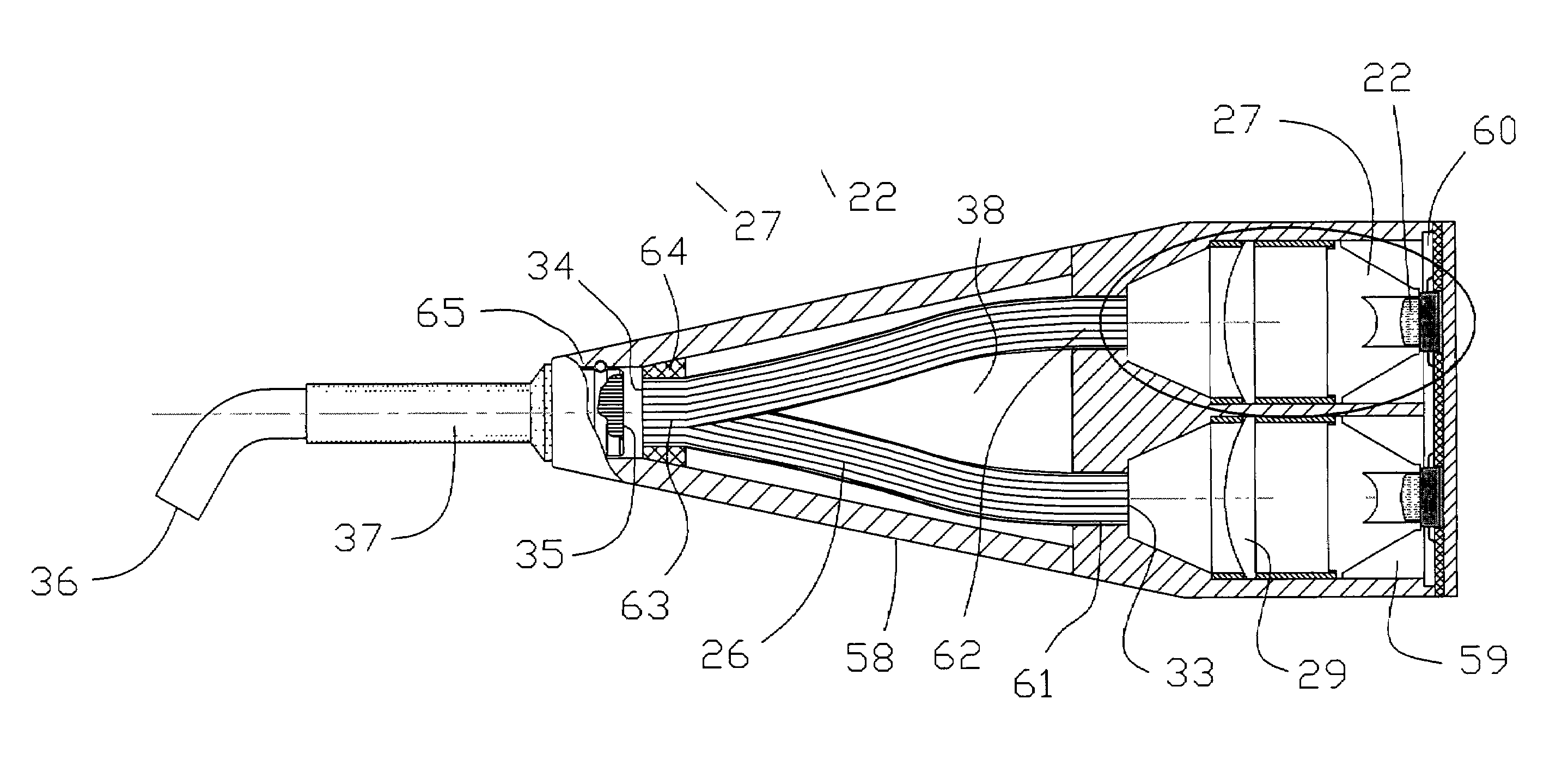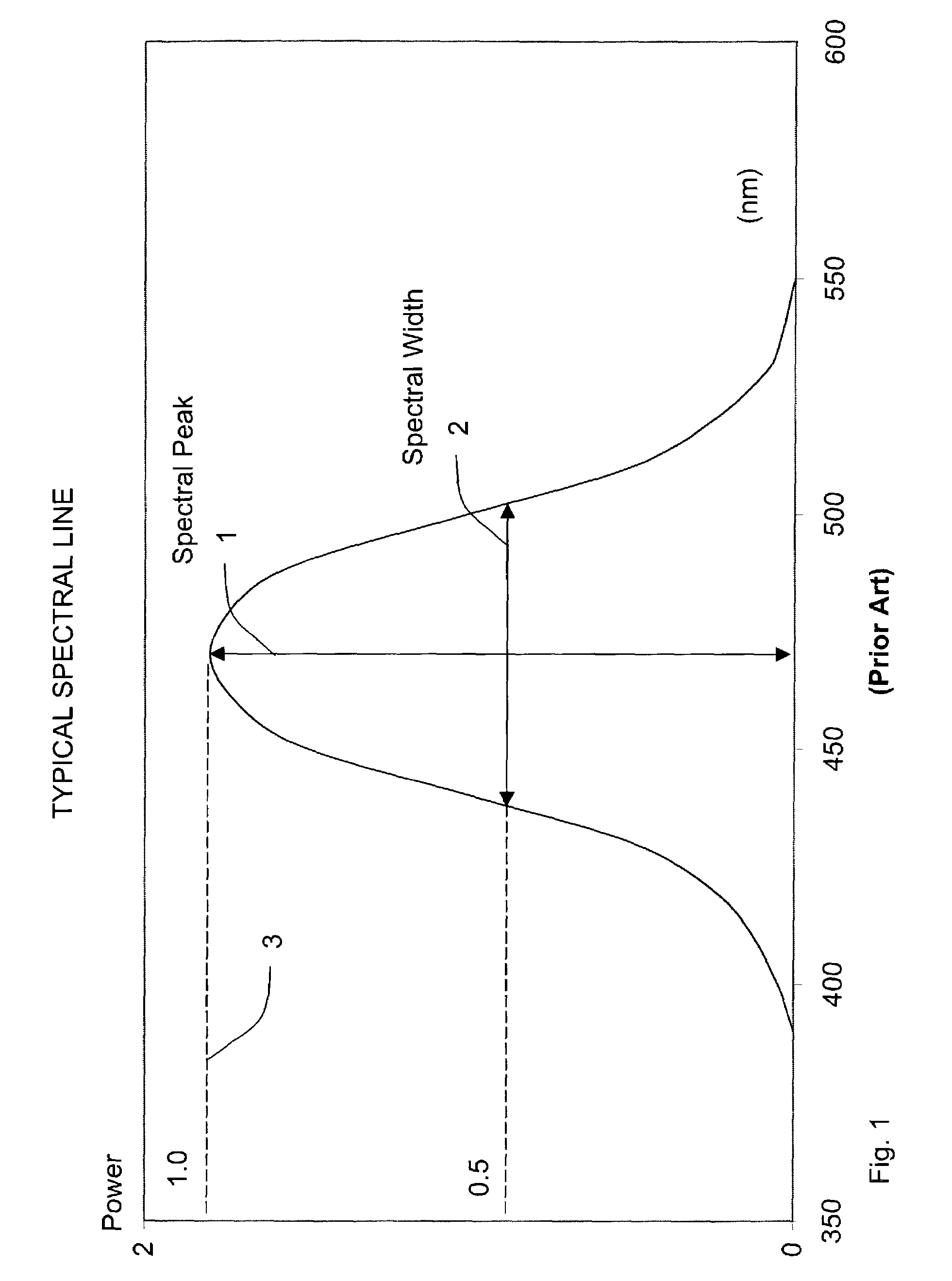Curing light with engineered spectrum and power compressor guide
a technology of engineered spectrum and compressor guide, applied in the field of light, can solve the problems of inconvenient patient care, increased labor intensity, and increased difficulty in adjusting the speed of the compressor guide,
- Summary
- Abstract
- Description
- Claims
- Application Information
AI Technical Summary
Problems solved by technology
Method used
Image
Examples
Embodiment Construction
[0021]The following detailed description includes a description of the best mode or modes of the invention presently contemplated. Such description is not intended to be understood in a limiting sense, but to be an example of the invention presented solely for illustration thereof, and by reference to which in connection with the following description and the accompanying drawing one skilled in the art may be advised of the advantages and construction of the invention.
[0022]FIG. 1 illustrates a typical spectral line for a light source. Light energy concentrates near a peak (central) wavelength 1 (λp,), where a relative light power reaches a maximum relative value 3 of 1.0 at the peak wavelength 1. Here, power may be measured, for example, as an electrical output from a photodetector that is indicative of the light intensity.
[0023]The further a wavelength deviates from the peak wavelength, λp, the lower its light power amplitude. An important characteristic of this spectral line is i...
PUM
 Login to View More
Login to View More Abstract
Description
Claims
Application Information
 Login to View More
Login to View More - R&D
- Intellectual Property
- Life Sciences
- Materials
- Tech Scout
- Unparalleled Data Quality
- Higher Quality Content
- 60% Fewer Hallucinations
Browse by: Latest US Patents, China's latest patents, Technical Efficacy Thesaurus, Application Domain, Technology Topic, Popular Technical Reports.
© 2025 PatSnap. All rights reserved.Legal|Privacy policy|Modern Slavery Act Transparency Statement|Sitemap|About US| Contact US: help@patsnap.com



